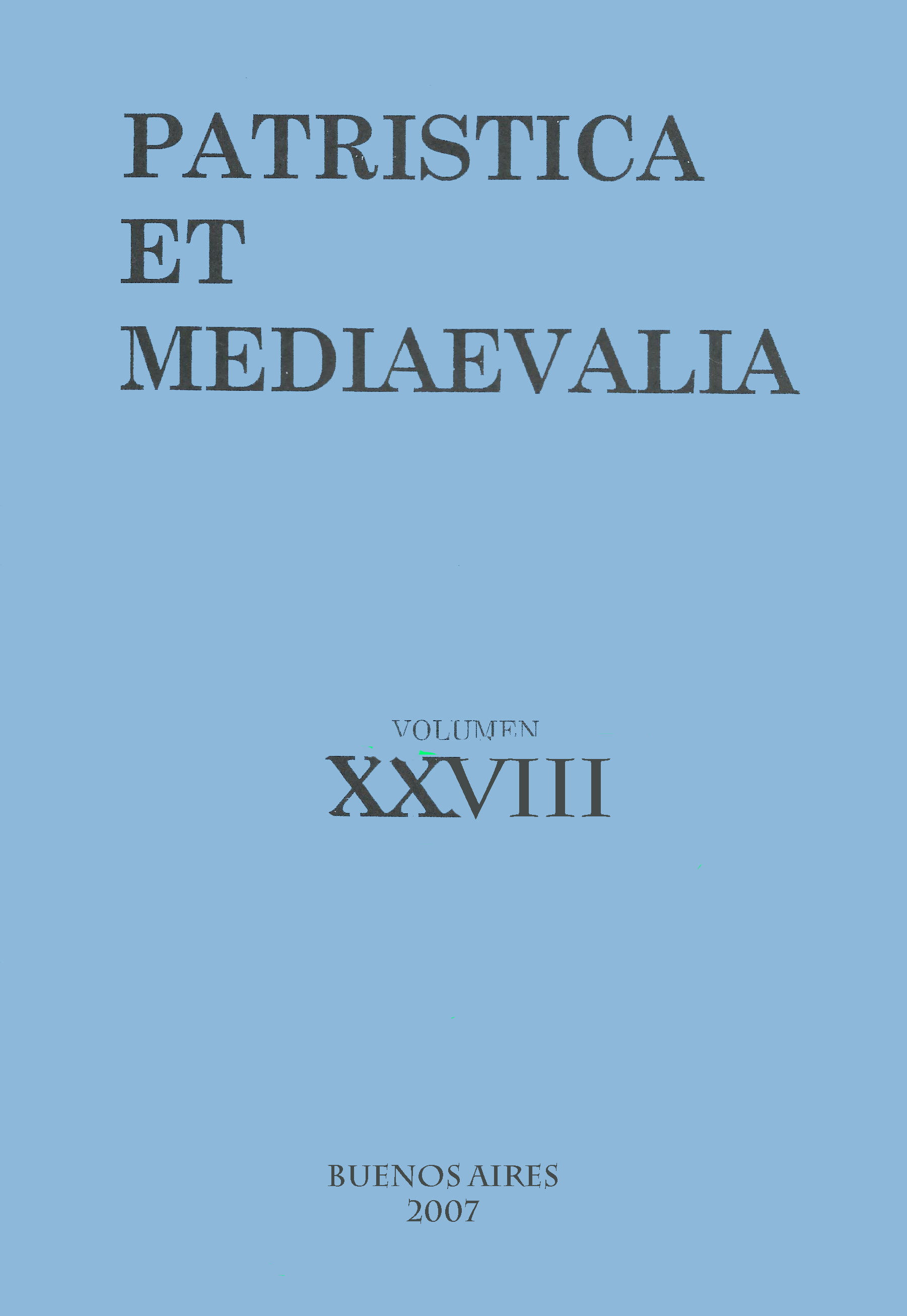From Hope to Salvation (the End of the Speculative Way). An Interpretation of De Concordia Treatise of Anselm of Canterbury
Abstract
De concordia, the last treatise written by Anselmo, constitutes a privileged high point in the genetic process of his thought. I will try to outline the overall structural aspects of this text that I consider important to define its belonging to this process: a) This work is inscribed –together with Monologion (M) and Cur deus homo (CDH)– in the process of deconstruction of the Anselmian speculative thought; b) The speculative aspect is closely associated to language through the “nihil” notion; c) The articulation between freedom and necessity in M, and the unfolding of the center of De Concordia (in the textual center and the objective center) are both subsidiary to the said aspect.Downloads
References
Audet, Th. A. (1968). Problématique et structure du ‘Cur Deus Homo’, Études d’histoire littéraire et doctrinale. Paris: Vrin.
Briancesco, E. (1981). Sentido y vigencia de la cristologia de San Anselmo: ensayo de lectura estructural del “Cur Deus homo”, I parte. Stromata, 37, 3-18.
Briancesco, E. (1982). Sentido y vigencia de la cristologia de San Anselmo: ensayo de lectura estructural del “Cur Deus homo”, II parte. Stromata, 38, 283-315.
Briancesco, E. (1987). El último Anselmo. Patristica et Mediaevalia, 8, 61-87.
Corbin, M. (1976). Nécessité et liberté. Sens et structure del argument du ‘Cur deus homo’ de Anselme de Cantorbéry. En Kannengiesser, C. & Marchasson, Y. (eds.). Humanisme et foi chrétienne, Mélanges scientifiques du centenaire de l’Institut Catholique de Paris. Paris: Beauchesne, 599-632.
Corti, E. (1988). Especularidad textual y pensamiento especulativo en Monologion de S. Anselmo de Canterbury. Patristica et Mediaevalia, 9, 47-90.
Corti, E. (1986). El Bien y la Esencia. Lectura de los capítulos I-IV de Monologion de S. Anselmo de Canterbury. Stromata, 42, 329-365.
Corti, E. (1989). Libertad y necesidad en Cur deus homo de Anselmo de Canterbury, I parte. Stromata, 45, 339-368.
Corti, E. (1990). Libertad y necesidad en Cur deus homo de Anselmo de Canterbury, II parte. Stromata, 46, 337-360.
Corti, E. (2003). La experiencia del lenguaje en Monologion y Cur deus homo de Anselmo de Canterbury. Stromata, 59, 225-237.
De Sales Schmitt, D. F. (1959). Die wissenschaftliche Methode in Anselms ‘Cur Deus Homo’, Spicilegium Beccense, I. Paris: Vrin.
Klenzler, K. (1981). Glauben und Denken bei Anselm von Canterbury. Freiburg im Breisgau: Herder.
Pouchet, R. (1964). La ‘rectitudo’ chez saint Anselme, un itinéraire Augustinien de l’Ame a Dieu. Paris: Etudes Augustieniennes.
Roques, R. (1963). Anselme de Cantorbery, Pourquoi Dieu s’est fait homme, Chrétiennes 91. Paris: du Cerf.
1. The authors who publish in this magazine accept the following conditions:
-
They retain the copyright and grant to the magazine the right of the first publication, with the work registered under the Attribution-ShareAlike 4.0 International License that allows third parties to use what is published as long as they mention the authorship of the work and the first publication in this magazine.
-
They can make other independent and additional contractual agreements for the non-exclusive distribution of the version of the article published in this magazine (eg. include it in an institutional repository or publish it in a book) provided that they clearly indicate that the work was first published in this journal.
-
They are allowed and recommended to publish their work on the Internet (for example on institutional or personal pages).
2. AutoArchive Conditions. Authors are allowed and encouraged to distribute post-print electronic versions of their manuscripts because it promotes their circulation, a possible increase of quotation and a major reach among the Academic community. Color RoMEO: blue.













